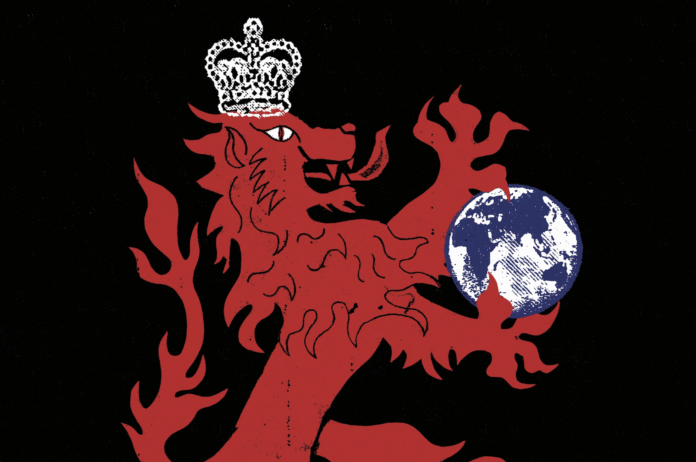
India and Myanmar, two countries with deep civilizational roots and diverse populations, share the historical experience of British colonial rule. Yet despite this common origin, the paths they have taken since achieving independence in the mid-20th century have diverged sharply.
India has managed to build a relatively stable and functioning democratic state, whereas Myanmar has remained locked in recurring cycles of civil war and authoritarian rule. This divergence is not the result of a single cause but rather a complex interplay of ethnic demographics, religious dynamics, the structural legacy of colonial governance, the processes of state-building, and the influence of external powers in the post-independence period.
Both countries are characterized by intricate ethnic mosaics, but the nature of their demographic compositions has had profoundly different political consequences.
India, though home to hundreds of ethnic and linguistic communities, has a demographic structure in which the Hindustani-speaking population forms a substantial and influential plurality, accounting for approximately 46.3% of the population. This group’s relative concentration has enabled it to form a cultural and political core around which a broader sense of national identity has been constructed. The dominant group’s language, values, and customs have achieved partial standardization across national institutions, providing a measure of cultural cohesion.
While India certainly faces regionalism, linguistic divisions, and caste-based inequalities, the existence of a large and relatively centralized ethnic bloc has enabled the state to contain these tensions without descending into widespread separatist conflict. The constitutional framework allows for a measure of regional autonomy and political pluralism, which has functioned as a safety valve for diverse demands.
Myanmar’s ethnic landscape, by contrast, is highly fragmented and lacks a comparable integrative core. Although the Bamar majority makes up roughly 68% of the population, the remaining 32% is divided among 134 officially recognized ethnic minority groups, many of which are concentrated in distinct and often remote geographical regions. Each with their own languages, religious practices, historical identities, and in many cases, armed militias.
Under colonial rule, these minority regions were governed separately from the Bamar heartland and given a degree of autonomy that encouraged the development of parallel political structures. As a result, these communities entered independence with a sense of distinct nationhood and political separateness. Unlike India, which successfully absorbed regional and ethnic variation into a federal democratic framework, Myanmar’s post-independence governments—dominated by Burman elites—pursued centralization and often exclusionary nationalist policies. The failure to accommodate ethnic aspirations through institutional mechanisms fueled distrust and led to protracted armed resistance, creating a landscape in which the state has never fully consolidated its territorial sovereignty.
Religious composition and the relationship between religion and state power further compound these differences. India, despite being a majority-Hindu country, institutionalized secularism as a foundational principle of its post-independence constitution. This commitment to secular governance was not merely symbolic; it played a substantive role in shaping policy and managing religious diversity. Minority religions such as Islam, Christianity, Sikhism, Buddhism, and Jainism were granted equal rights under the law, and religious freedom was constitutionally protected. Though India has experienced periodic outbreaks of sectarian violence—most notably between Hindu and Muslim communities—these conflicts have generally remained localized and have been mediated by both legal institutions and civil society actors.
Furthermore, Hinduism’s inherently pluralistic character and deep cultural entrenchment have allowed for a certain level of symbolic unity even amid religious diversity. State intervention, particularly in moments of tension, often involves deploying security forces to sensitive areas, regulating public religious expression to prevent escalation, and encouraging interfaith dialogue. These measures, while not always sufficient, have helped to sustain a broad—if imperfect—framework for coexistence.
In Myanmar, religion has become an aggravating rather than a mediating factor in the country’s deep divisions. Although around 88% of the population adheres to Theravada Buddhism, religious identity is closely intertwined with ethnicity, and non-Buddhist communities are disproportionately represented among ethnic minorities. Unlike India’s secular framework, the Myanmar state has promoted a form of Buddhist nationalism that has marginalized religious minorities and contributed to a sense of exclusion and alienation. Religious differences reinforce ethnic separatism and deepen the mistrust between minority communities and the state. The result is a combustible combination of ethnic and religious grievance that has become a persistent driver of conflict.
Colonial legacies also played a critical role in shaping post-independence trajectories. In India, British colonial rule—while deeply exploitative—nonetheless created administrative, infrastructural, and legal institutions that facilitated a measure of national integration. The development of a railway network, postal services, and telegraph lines enabled better connectivity between regions. Moreover, the British emphasis on English-language education produced a class of elites with modern administrative training and international outlooks. After independence, these individuals were instrumental in drafting a comprehensive constitution that enshrined democratic governance, civil liberties, and federalism. India’s constitutional assembly was a model of inclusive negotiation, involving representatives from a wide array of social, religious, and political backgrounds. The resulting constitutional framework struck a balance between national unity and regional autonomy, establishing a federal structure that allowed states to preserve their linguistic and cultural identities while participating in a unified national system. This compromise has endured despite significant political, economic, and social challenges.
By contrast, the British approach in Myanmar was more fragmented and short-term in orientation. The colonial administration deliberately divided the country into Ministerial Burma and the Frontier Areas, governing them under separate legal and administrative systems. This divide-and-rule strategy fostered deep divisions between the Bamar majority and the peripheral ethnic groups, who were often recruited into colonial armed forces as a counterweight to Bamar nationalism.
Economically, British policies deepened regional inequalities. In some northern and eastern regions, the British encouraged monoculture cash crops or opium cultivation for export, disrupting local economies and social structures. By the time Myanmar gained independence in 1948, the country lacked a unified administrative system or a shared political culture capable of supporting national integration. Ethnic minorities, accustomed to relative autonomy, were unwilling to submit to Bamar-dominated central rule, and successive governments failed to establish the legitimacy necessary for effective governance across the country. The result was a fractured postcolonial state, vulnerable to both internal insurrection and military authoritarianism.
The international environment further influenced these divergent outcomes. During the Cold War, India adopted a policy of non-alignment, positioning itself as a leader of the Non-Aligned Movement. This strategic autonomy earned India diplomatic respect across ideological blocs and helped it avoid becoming a battleground for proxy wars.
While both the United States and the Soviet Union sought influence in India, they largely did so through diplomacy, trade, and aid rather than direct intervention. India’s large population, strategic location, and economic potential made its stability a shared interest for many powers, which discouraged external support for separatist movements or insurgencies. This relative insulation from geopolitical interference enabled India to focus on internal development and institutional consolidation without the added pressure of great-power conflict.
Myanmar, on the other hand, has been far more exposed to geopolitical manipulation. Its location at the intersection of South and Southeast Asia, combined with its vast natural resources—including timber, jade, and natural gas—has made it a strategic prize for regional and global powers. Neighboring countries have frequently intervened, either overtly or covertly, to support ethnic insurgent groups or to secure access to resources and strategic corridors. For instance, some bordering nations have provided safe havens, logistical support, or financial assistance to ethnic armed groups operating near their territories, both to exert influence and to contain instability from spilling across borders. The result is a highly internationalized internal conflict, in which various factions are sustained not only by local grievances but also by foreign interests. This has made national reconciliation even more difficult and has entrenched a pattern of militarized politics, resource-driven conflict, and fragmented authority.
The endurance of India’s democratic framework, its institutional commitment to pluralism, and its capacity to absorb diversity through negotiated constitutionalism have allowed it to maintain relative unity and stability.
Myanmar, hindered by a fractured colonial inheritance, ethnonationalist governance, religious exclusion, and persistent foreign interference, has struggled to build a coherent and inclusive state.
Source: Daily Mail, the Irrawaddy, BBC, indiafacts, the new yorker



